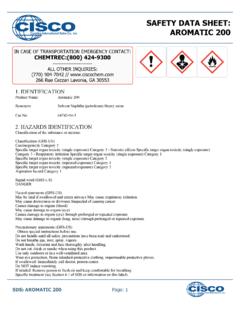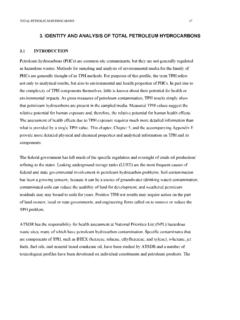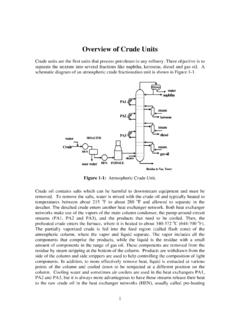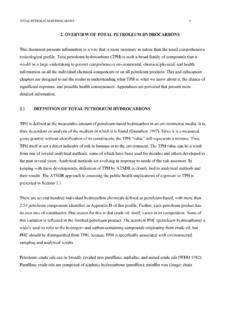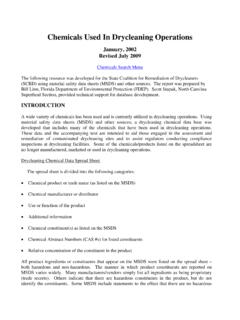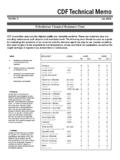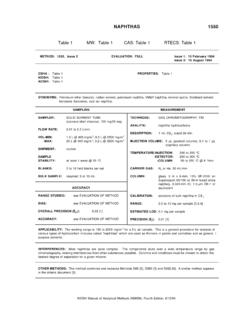Transcription of Nitrile Glove Chemical-Compatibility Reference
1 Nitrile : Short-term splash protectionOrganicsAqueous/InorganicCyclo hexane37% FormaldehydeGlutaraldehyde10% Hydrochloric acidHeptane37% Hydrochloric acidMineral spirits30% Hydrogen peroxidePentane10% Nitric acidPropylene glycol50% Potassium hydroxideNaphtha85% Phosphoric acidOctane50% Sodium hydroxideOctanol10 -13% BleachHexane47% Sulfuric acidHeptaneEthidium bromideMercury (metallic) Nitrile has poor resistance to: Alcohols Ketones Halogenated hydrocarbons aromatic hydrocarbons Esters Ethers Amines Concentrated acidsIn general, Nitrile rubber provides short-term splash protection* against the following chemicals.
2 *Breakthrough will notoccur in under 15 mins for a 5-mil or greater thickness gloves come in contact with the chemical below, they must be changed immediately*to avoid exposure.*Breakthrough mayoccur in under one minute for a 5-mil or lesser thickness Glove .*See the FACT SHEET: Hydrofluoric Acidin the Chemical Hygiene Plan for Glove recommendations for chemicals listed in redare able to penetrate the skin, contributing to systemic toxic effects of exposure to the chemical (ACGIH, Skin notation)Poor resistance (<1-minute breakthrough) + Skin corrosion hazard and/or high toxicityConcentrated acetic acid88% Formic acid30% Ammonium hydroxide70% Nitric acid95% Sulfuric acid*Hydrofluoric acid (HF)
3 Nitrile Glove Chemical-Compatibility ReferenceDisposable Nitrile gloves do not provide protection against these highly corrosive are just a few examples. This is not a complete poster is adapted from Penn s CHP Fact Sheet: Disposable Nitrile Gloves in Chemical LabScan the QR code to see the full Fact Feb 2019 KJBN itrile: Short-term splash protectionNitrile: Poor protection (<1 minute) OrganicsAcetoneEthanol1,4-DioxaneEthyl acetateAcetonitrileMethanolAcrylonitrile n-ButanolBenzeneNitrobenzeneCarbon disulfideo-XyleneChloroformPhenolDichlor omethanePyridineDiethyl etherTetrahydrofuranDimethylformamide (DMF)TolueneNitrile.
4 Poor protection (<1 minute) OrganicsNitrile has good general resistance to: Oils Fuels Some organic solvents Weak acids Weak causticsPoor resistance (<1-minute breakthrough) + Skin corrosion hazard and/or high toxicity


